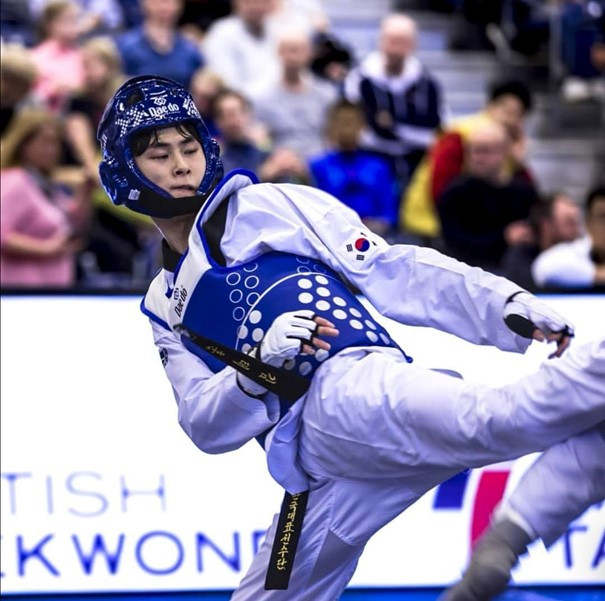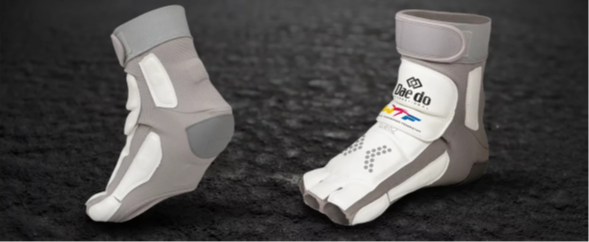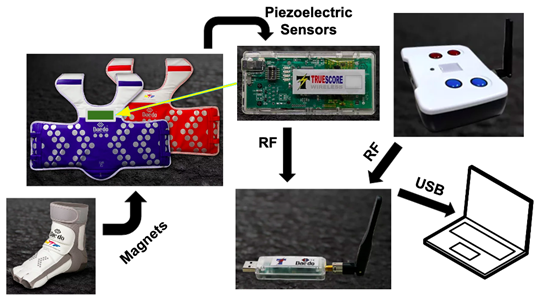Taekwondo
Welcome and thanks for visiting...

Protecting and scoring in Taekwondo

Taekwondo fighters wear red or blue pads that cover the abdomen and head. These pads protect the athletes from injuries and register points thanks to their embedded electronics. This system is called the Protective Scoring System (PSS). Here are some explanations and reasons for using this type of system.

The introduction to the Olympic Games: an essential step for Taekwondo
Taekwondo is a martial art that became Olympic in 2000 at the Sydney Olympic Games. Becoming Olympic was, for this sport, an essential step for its international development. The reason is evident as the Olympic Games provide global visibility and privilege the sports that are part of it to obtain funding from governments and national Olympic committees. The race for medals between nations involves millions of dollars of investment.
The need to create a level playing field
The presence at the Olympic Games also requires transparent, clear, fair rules avoiding arbitrary decisions. The winner of a match must be determined without resorting to questionable opinions or evaluations. In soccer, for example, a goal is scored when the ball crosses the goal line. This line is visible, and everyone can observe the ball's movement. A questionable situation could occur when the ball stops precisely in the middle of the goal line, which is rare.
The problem of combat sports
Combat sports, which want to avoid injuries that can be devastating for the contestants, rightly prohibit contact. The solution, in this case, is to let the players simulate the hits and let the referees evaluate if an athlete scores a point. However, an athlete or coach can easily challenge this type of judging, and subjective discussions quickly occur.
Protective gear used in Taekwondo
Taekwondo protects athletes on the parts of the body where strikes are allowed - the abdomen and head - with a body shield (hogu) and helmets (head guard). It enables athletes to perform real hits on these protected areas without a high risk of injury. Judges seated in the corners of the fighting area operate a remote control with a red or blue button. In favor of the blue athlete, the blue button is pressed when a judge determines that a kick by that athlete has been properly executed on the hogu or head guard with the minimum required force. For the point to be recorded, it is necessary for two out of three judges to press the same button within a short window of time. Problem solved? Is impartiality guaranteed? In practice, it turned out that this solution was still insufficient and subject to contestation by coaches and athletes. It is challenging for a judge to evaluate the power and precision. Taekwondo is a fast-paced sport, and depending on the referee's angle of view, it remains still difficult to assess a situation in all cases.
Sensors record the points.
Taekwondo has implemented an electronic system in the body shield (hogu) and head guard to improve its fairness. This system automatically records a valid hit, and it is left to the technology to determine if an athlete scores a point. A point is only good if the athlete accurately hits with the hands or feet and with sufficient force. To achieve this, athletes competing in sparring competitions that use an electronic point scoring system must wear E-Foot Protectors. How does this technology work?

E-Foot Protector
A technology based on magnets or RFID
The E-Foot Protector contains magnets embedded in parts such as the bridge and heel of the foot. A valid kick is determined by whether the hogu - containing magnetometers - detects a magnet in proximity to the impact location. If the impact is, for example, from a knee strike - which is strictly forbidden - the hogu does not detect a magnet in proximity and does not indicate a valid kick. When the impact is validated as being from a kick, piezoelectric force sensors evaluate the kick's power by the level of distortion of the hogu. A radio frequency (RF) transmitter then wirelessly sends the information to the connected computer. The software on the computer calculates the amount of force with which the hogu has been hit. If the power exceeds a pre-specified threshold, the software awards points to the player who made the hit.
This system means that a player needs a correct technique when executing a kick to "turn the sensor on" and needs adequate power to register the kick. It eliminates points registering with knees, bodies colliding, and soft sensors just touching the protector. The minimum power can also be adapted by weight division.

Instead of magnets, the E-Foot Protector can also be embedded with RFID technology that detects a valid Kick on the Electronic Protectors. The RFID sensor on the E-Foot Protector reacts to the RFID Antenna on the Electronic Protectors in milliseconds. The process is then the same as described for the system with the magnets.
A developing technology
Electronic systems have allowed Taekwondo to develop into a sport with exciting matches. The scoring methods are clear to the athletes, and they treat all participants equally. Some critics, however, note that this scoring method influences the sport and transforms the traditional techniques of Taekwondo. Athletes adapt their techniques to be as efficient as possible with the technology, and the one who knows how the technology works has an advantage over the competition. The technology's research and development continue so that the scoring system remains as close as possible to the original sport of Taekwondo.








